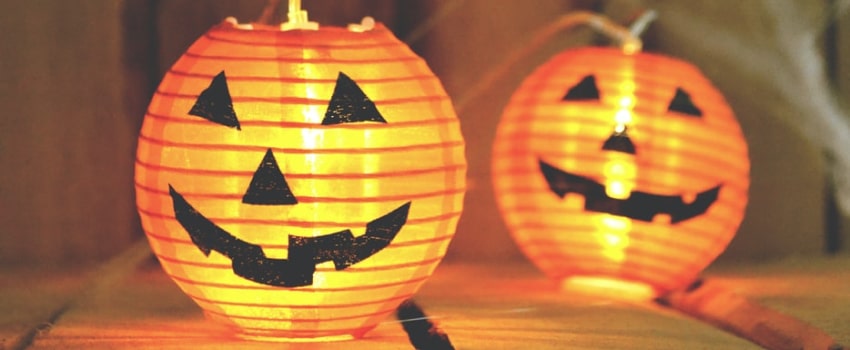
English Heritage have a number of events planned across the country to celebrate Halloween. So get your spooky fancy dress outfits at the ready and check out what is on offer at their historic venues this coming October half term. Scary storytelling, creepy crafts and trick or treat all feature, as well as night time tours of some of the country’s eeriest castles for those that are brave enough!
To get you in the mood here are 4 bits of Halloween trivia…
Carved Pumpkins come from the Irish legend of Stingy Jack
According to legend, Stingy Jack drank with the devil but refused to pay. He tricked the devil, not once but twice so that he wouldn’t claim his soul. When Jack eventually died, neither God nor the Devil would allow him to pass in to Heaven or Hell. God didn’t want anything to do with the trickster, and the Devil wouldn’t break his promise. Instead, Jack was sent to roam the earth with only a burning coal to light his way. He put the coal inside a carved out turnip and is said to still be walking the earth to this day.
In response to this tale, people in Ireland and Scotland began creating their own lanterns out of turnips, beets and potatoes. The tradition then passed to America where people used pumpkins instead.
Halloween originated from the ancient Samhain festival
It is thought that the modern Halloween has its roots in the ancient Gaelic festival of Samhain.
Samhain marks the end of the harvest season and the beginning of winter. Traditionally, it is celebrated on 31st October and dates back many centuries. In modern times Samhain and the Christian All Saints and All Souls days have merged to form Halloween.
In the eighth century, in an effort to spread Christianity, Pope Gregory III decreed November 1 as All Saints’ Day and incorporated some of the rituals of Samhain. All Saints’ Day was also called All Hallows and the night before, when the traditional Samhain festival used to take place, was called All Hallows’ Eve.
Trick or Treating has its roots in ‘Souling’
Children dressing up in ghoulish outfits and going door to door asking for treats is an odd tradition, but like several Halloween activities the origins of it can be traced back to the rituals of Samhain.
It was believed that ghosts walked the earth on the night of Samhain, so people would dress up in costumes and light bonfires in an effort to ward off the spirits. When the Christian festivals adopted the pagan Gaelic celebration the act of ‘souling’ became popular, and poor children and adults would go door-to-door dressed as spirits accepting food in exchange for prayers.
Mexican Day of the Dead
The Day of the Dead, or Dia de los Muertos, actually takes place over three days between October 31- November 2. It isn’t just confined to Mexico, it is also celebrated in a few other Hispanic countries.
November 1st, Dia de los Inocentes, honours children that died, and family members decorate graves with white lilies. On November 2nd, Dia de los Muertos, families honour adults who have died and place orange marigolds on grave sites.
The original celebration comes from Aztec culture and actually lasted for a month, but when Spanish conquistadors invaded Mexico in the 16th century, they merged the festival with the Catholic All Saints’ Day. Today’s celebration is a mix of both Aztec rituals of skulls, altars to the dead and food, with Catholic masses and prayers.
Halloween events with English Heritage
If you would like to find out what activities English Heritage are planning this October half term then please visit their Halloween page.
Discount on Membership
English Heritage are continuing their popular 15% off Gift & Annual Memberships voucher code throughout October at English Heritage Membership. Simply use code ‘EH2020’ at checkout. Code will expire 31st October 2020





